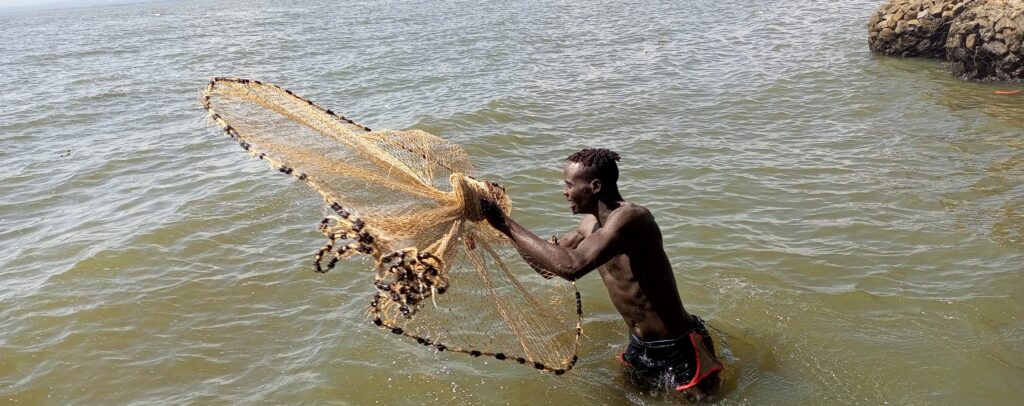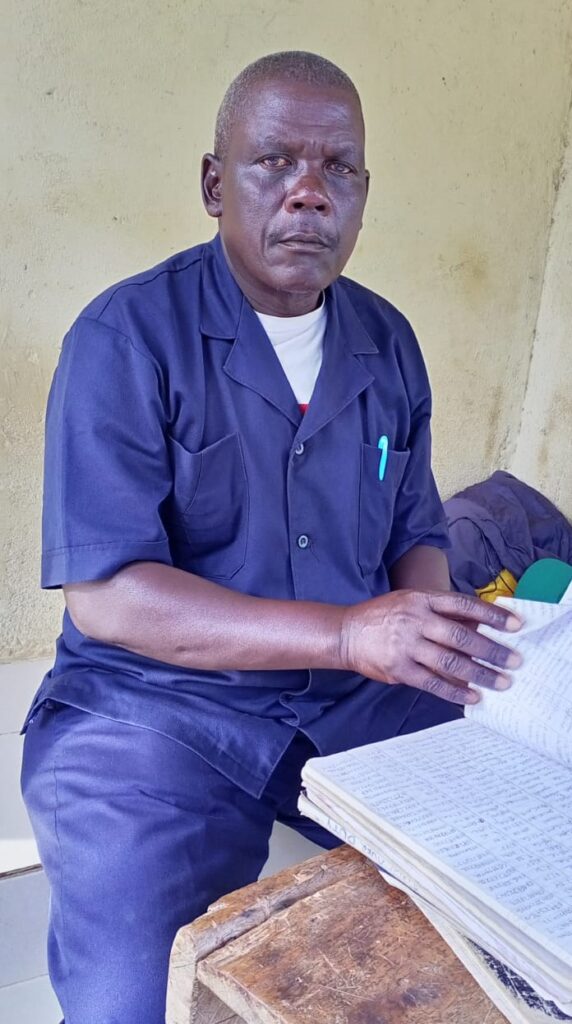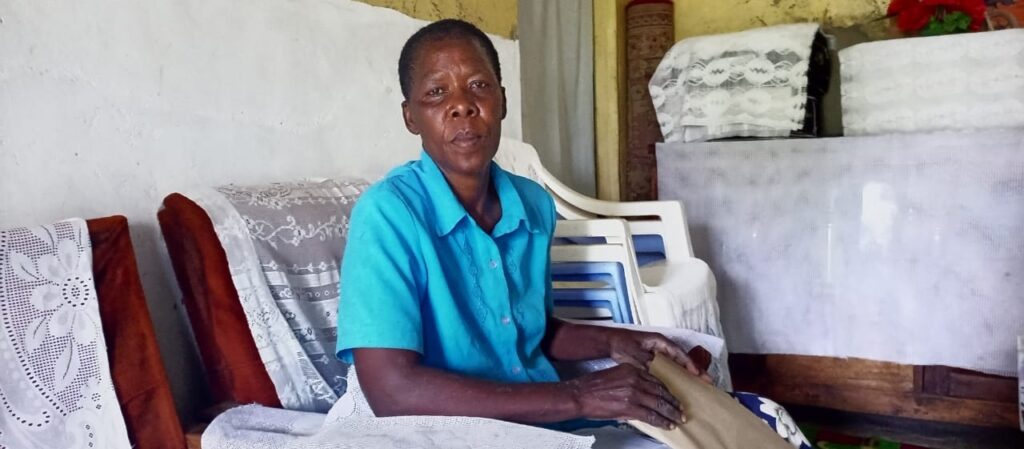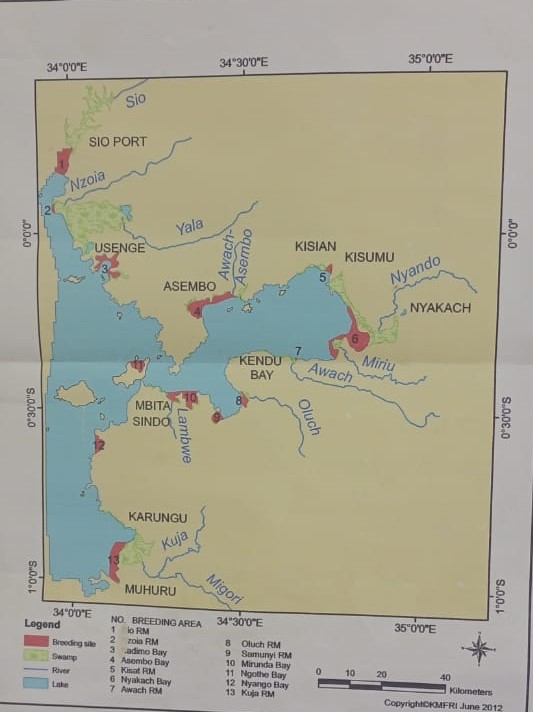This story is segmented into two parts. In part one, we look into the lives of families which are bearing the burden of impacts of damaged Lake Victoria ecosystem, while in PART TWO, we look at evidential science around the destruction of the ecosystem, and efforts put in place in a bid to try and save the resource
Iddi Omar Yusuf sits pensively in his living room.
The former fisherman and fishing boat maker lost his eyesight a decade ago.
At 85, and weighed down by ill health, he has no much to do.But the history of fishing in Lake Victoria is still clear in his mind.
I lost my son and grandson in this lake. I earned my entire livelihood from this lake
Iddi Omar Yusuf
“What are some of your fond memories of Lake Victoria?” the writer inquires.
The old man clears his voice, spreads a lazy smile across his face, adjusts his seat, raises his eyebrows, and begins; “I have both good and bad, but I would wish to start with the latter.”
“I lost my son and grandson in this lake. I earned my entire livelihood from this lake,” he adds.
A short silence engulfs the room, and the youngest of his four wives; Saumu Abdallah, embraces him, as if to support him to sit more comfortably.
Usoma village
Omar’s home is about 200 metres from the shores of Lake Victoria, within Usoma village, in Kisumu West. He was born and raised here.
He began fishing at the age of 18, and spent about 57 years in the lake. He quit fishing at the age of 75, when he could no longer gather enough strength required in the trade.
“When we started fishing, there was more than enough fish. But when I was quitting, I could not even manage a tenth of what we used to get when we first ventured into the trade,” he said.
Omar’s assertions are confirmed by Kenya Marine and Fisheries Research Institute (KEMFRI) in Kisumu.

According to KEMFRI, a fisherman who managed to get 17 kilos of catch in the year 2000 could not manage seven kilos as of 2021.
The institution notes that the lake is troubled, and people living along the shores are the key recipients of the impacts of the troubles.
KEMFRI is a state corporation under the Ministry of Agriculture, Livestock, Fisheries and Cooperatives, State Department for Fisheries, Aquaculture and the Blue Economy.
Its mandate is to undertake research in “marine and freshwater fisheries, aquaculture, environmental and ecological studies, and marine research including chemical and physical oceanography.”
Its role ensures provision of scientific data and information for sustainable development of the Blue Economy.

Human-wildlife conflict
As Omar continues to narrate his memories of the lake, we take him back to the story of the family members he lost through the lake.
He recalls his grandson, Ramadhan Omar, who was attacked by a crocodile in 2014 while fishing near Usoma Beach.
The young man was saved, and fully recovered.
But a year later, he was attacked by a hippo, which killed him.
He was just 22 years old, and left behind a wife and three children.
These days hippos graze inside our compound, and it is very dangerous
Omar
Another year later, Mzee Omar’s son, Abubakar Iddi was attacked by a crocodile not far from the beach.
His body was recovered with one limb missing.
He was 25 years old when he died, and he left behind a wife and two children.
In Kenya, any death, injury or damages made by wildlife is compensated by the Kenya Wildlife Services (KWS).
By the time of interviewing Mzee Omar in July 2021, his family was yet to be compensated for the loss of the two kins.
Every time Omar sits in his compound, facing the lake, the pain of losing his kins revisits, and reminds him of the troubled lake.
“These days hippos graze inside our compound, and it is very dangerous,” he said.
And KWS confirms this.

Bleeding Lake Victoria ecosystem
According to Christine Boit, the Senior Warden with Kenya Wildlife Services in charge of Kisumu and Siaya Counties, the damaged ecosystem, caused by human activities and climate change, is to blame for the increased cases of human-wildlife conflict.
“The past ten years has seen an increase in the water levels of Lake Victoria. With this, breeding and feeding areas for our wildlife are affected,” says Boit.
This, she says, forces animals such as hippos to find new grazing areas, which happen to be areas inhabited by people close to the shores of the lake.
Snakes and crocodiles are also pushed to the shores.
The past ten years has seen an increase in the water levels of Lake Victoria. With this, breeding and feeding areas for our wildlife are affected,
Christine Boit
She says cases of human-wildlife conflict in Kisumu and Homa Bay counties have increased from 10 in 2017 to 20 in 2021, according to their daily reports.
“To mitigate this, we have come up with a number of strategies, which include escalating engagement with the public on human-wildlife relations, adding more KWS stations to increase rate of response, among others,” she says.
According to KWS records, crocodile attacks take the lead at 30 percent, followed by monkeys at 26 percent, hippos at 20 percent, and hyenas at eight percent.
Snakes account for three percent of the cases, while others are baboons (6 percent), leopards (5 percent) and tsavo cats (2 percent).
In the last available government report from 2015-February 2017, there were more than 4,875 human-wildlife conflicts tracked countrywide.
This included 28 deaths and 43 injuries from hippos, and 221 deaths and 2,670 injuries from snakes. During the same time period, the government also paid out a total of Sh513 million (USD $4.3 million) in compensation claims for such cases.
Compensation slow to come
Omar’s pain is not much different from that of Mzee Sylvanus Okello Nundu, who lives 80 kilometers away in the neighbouring Homa Bay County.

On January 13, 2011, Nundu’s 13-year-old son had gone to the lake shores to fetch water together with friends.
A crocodile appeared as they were leaving water, capturing Nundu’s son.
“When an alarm was raised, the crocodile escaped into the deep waters with the boy,” he said.
A search was mounted for two weeks, and nothing was retrieved. Not even a body part.
In the Luo tradition, when death occurs, burial comes as a way of closure. Luo people belong to the largest tribe which occupies the Kenyan shores of Lake Victoria.
My wife and I are strong Christians and we chose to pray instead of going the culture way
Mzee Nundu
If no shred of body part is retrieved, the family of the deceased take either dust from the scene of the incident, or pieces of the deceased clothes left behind, for burial. If none of that can be traced, the family buries a banana trunk.
But for 54-year-old Mzee Nundu, none of that was done.
“My wife and I are strong Christians and we chose to pray instead of going the culture way,” he said.
When Lake Region Bulletin visited the family, Nundu was already at his work place at Lala Secondary School in Arojo, in the outskirts of Homa Bay town.
According to KWS regulations, death from wildlife attracts compensation of Sh5 million.
But Nundu’s case is complicated as no one can confirm that death occurred.
In Kenya, death can only be confirmed by burial permit or death certificate – Nundu has none of these.
He therefore had to wait for seven years before claiming any compensation, a period recognized by Kenyan laws to confirm that a person whose whereabouts is not known can be declared dead.
As at the time of meeting Lake Region Bulletin, Nundu was waiting for communication from KWS on the progress of the compensation.
“The loss was huge, and it has affected my family till today,” said Nundu.
He says his remaining three children no longer go to the lake, for water or to water animals.
“For me I have no option. Despite the fears, I have to go to the lake,” he says. “Even road accidents claim several lives on a daily basis, but people still use road transport.”
Conflicts linked to climate change and encroachment
In Kisumu West, Florence Atieno lost her 17-year-old son on January 24, 2016.
The boy, Duncan Otieno had gone to take a bath at the beach; when a crocodile pounced on him.
Screams from witnesses bore no fruits, and the animal managed to escape with the boy into the deep waters, leaving his clothes at the shores.
But as opposed to Nundu’s case, Ms Atieno, 55, managed to get some body parts of the son; to bury.

“This was my last born, and you may need to understand what it feels to lose a last born,” she said.
Andrew Rakwaro is the Chairman of Usoma Beach Management Unit. He has witnessed lives lost in the lake, and has also participated in some rescue or search missions.
“Finding hippos in our homes and farms is no longer news,” he says.
Can you see that tree over there? That was the beach, but the water has increased into our farms and homes. It is not us invading the ecosystem of the wildlife, as KWS claim
Rakwaro
Rakwaro, 48, was born and raised in this village, and has been a fisherman all his life.
When we visited him, Mr Rakwaro took us to the shores of the lake.
“Can you see that tree over there? That was the beach, but the water has increased into our farms and homes. It is not us invading the ecosystem of the wildlife, as KWS claim,” he says.
Rakwaro’s sentiments are supported by the National Aeronautics and Space Administration (NASA).
Radar Altimetry Data indicate that Lake Victoria water levels reached 1,137.29 metres above the mean sea level on May 19, 2021, a high for satellite data records that date to 1992.
For Michael Nyaguti, an environmental activist along the shores of Lake Victoria, no one should shift blame over the bleeding lake.
“It is clear that the habitat and the grazing areas for these wildlife have been interfered with,” he says.
When Lake Region Bulletin caught up with him, Mr Nyaguti was preparing for an environmental forum, but he spared time to take us to the beach.
As we moved closer to the water, there were heaps of sand from sand mining.
Crocodiles’ main food is meat. But when the fish is depleted and its habitat destroyed, including the wetlands which house some animals it feeds on, then it remains with human beings for food
Nyaguti
“Can you see this? Is this not what I was talking about?” he posed.
He adds: “Crocodiles’ main food is meat. But when the fish is depleted and its habitat destroyed, including the wetlands which house some animals it feeds on, then it remains with human beings for food.”

Click HERE to read PART TWO of the story.
This story was supported by InfoNile with funding from JRS Biodiversity Foundation.Additional reporting by Annika McGinnis, Ruth Mwizeere and Primrose Natukunda.
